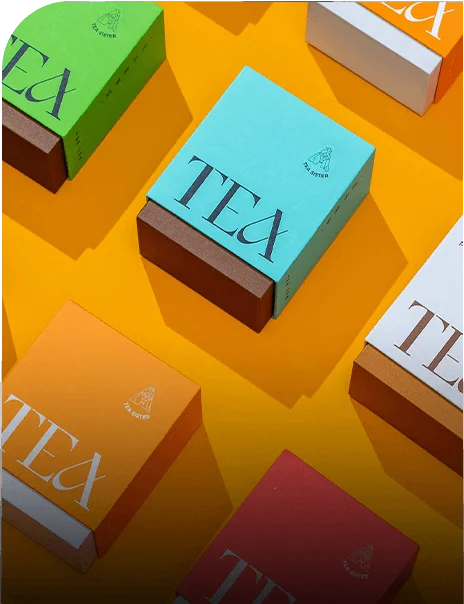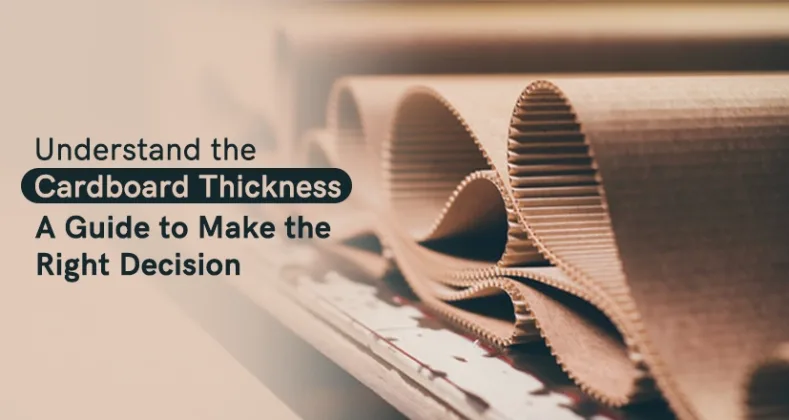9 out of 10 shipping items in the USA are delivered in cardboard packaging. This leads us to a point: misjudging cardboard thickness can lead to wasted time, money, and frustration when shipping. A box that’s too small won’t hold your item, and one that’s too large can cost extra on shipping or leave you with a lot of space.
So, it’s crucial to have an accurate and comprehensive understanding before shipping your item. Further reading will equip you to develop this understanding and provide tips to ensure you choose the most aligned thickness every single time.
The Significance of Cardboard Thickness
About 90 percent of all products are shipped using cardboard because it safely protects items during delivery. Cardboard is a flexible material used in many industries for packaging, displays, and structural parts. It comes in different thicknesses, which can significantly impact its use.
The thickness of cardboard affects its resilience and suitability for various applications. Even if you’re sending fragile cookware sets through the mail or creating sturdy displays, having an accurate understanding of the proper thickness will be helpful.
Accurate Methods for Measuring Cardboard Thickness
Various ways are available to measure thickness, including grams per square meter, the point system, flute type, and board style.
Knowledge of each method will help you pick the right thickness for your goods without becoming overwhelmed by the decision-making process.
Grams Per Square Meter (GSM)
GSM is a measurement unit that analyzes the weight of packaging materials like corrugated cardboard. GSM is widely recognized as a reliable method for measuring thickness. However, converting GSM into an easily understandable unit can be tricky.
Here are some GSM ranges for different types of paper and cardboard to help you better understand how GSM relates to thickness:
- 35 to 55 GSM: Common for newspapers
- 90 to 100 GSM: Typical for printer paper
- 120 to 140 GSM: Used for posters
- 210 to 300 GSM: Suitable for brochures
- 350 to 400 GSM: Ideal for packaging
If you need thick, sturdy cardboard for packaging, look for a GSM above 350.
It’s also important to note that higher GSM doesn’t always mean heavier weight. GSM considers weight, but it’s just one of three key factors.
Corrugated Board Style
There are three main categories of corrugated cardboard you’ll come across when it comes to different thicknesses associated with the cardboard boxes:
- Single wall: One layer of fluted board is sandwiched between two sheets of liner board, resulting in a box also known as a single-wall cardboard box. It comes in various thicknesses, typically 2 mm to 7 mm.
- Double-walled: Two fluting layers are glued to three layers of liner board, producing a double-walled cardboard box stronger than a single wall alone. The thickness typically ranges from 5 mm to 12 mm.
- Triple wall: Three layers of fluting are laminated with four-liner boards to make a triple—or tri-wall box, which is probably the most heavy-weight and durable of all boxes. Its thickness can be up to 15 mm or more.
The Point System (PT)
The point system (PT) measures the thickness of paper, including the corrugated paper used in cardboard boxes. Each “point” equals 1/1000 of an inch. Paper thickness can range from 8 points (thin) to 16 points (thick).
Corrugated Flute Type
Another method for measuring thickness is the corrugated flute type. A corrugated “flute” is the wavy layer between the cardboard liners in corrugated boxes. These flutes add insulation and protection.
Flute sizes vary, and they’re named based on their developed order, not their thickness. Here are some flute sizes and their measurements:
- A flute: 5 millimeters thick or 1/4”
- B flute: 3 millimeters thick or 1/8” (0.125”)
- C flute: 4 millimeters thick or 11/64”
- D flute: 2 millimeters thick or (.085”)
- E flute: 1.5 millimeters thick or 1/16” (.0625”)
- F flute: 0.6 millimeters thick or 1/32”
The C flute is the most common type and suits various products.
Picking the Right Cardboard Thickness for Your Project
Selecting the appropriate thickness for your cardboard depends on what you’re trying to achieve. Here are some guidelines to help you make the right choice:
- Shipping and Packaging:
If you’re shipping fragile items, opt for double-wall or triple-wall cardboard boxes with inserts. This will provide the necessary cushioning and protection. For less delicate items, single-wall cardboard is often sufficient.
2. Crafting and Displays:
Thicker cardboard, such as 12-point or 16-point, is more manageable for crafting projects or displays. It’s easier to cut, fold, and shape, making it perfect for detailed work.
3. Industrial Applications:
When strength and durability are paramount, triple-wall cardboard is the go-to choice. It can handle heavy loads and rough handling, making it suitable for industrial use.
The Key Takeaways
Picking the right cardboard thickness is crucial for the success of your project. Now that you clearly understand thickness, you’re better prepared to make decisions that will lead to successful outcomes, whatever your project may be.
With that in mind, we would like to introduce our offer if you want tailored, perfect custom packaging for your business. When you decide to work with Custom Packaging Lane, you will have complete autonomy in customizing your branding elements. Give your quote and get the promised value.




















